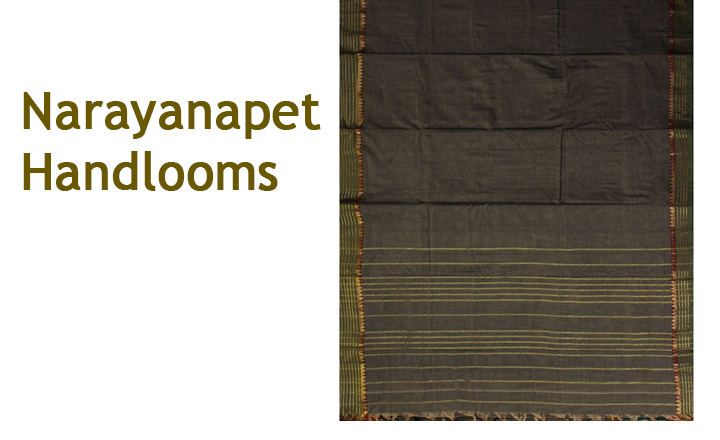A Distinguished Weaving Tradition!

Narayanpet region in Telangana is renowned for its exquisite and unique cotton handloom and silk sarees, which are widely popular. It has always been a cherished desire of women to choose sarees that are special and exclusive.
Historic Legacy
There is a historic legacy behind the handloom industry of Narayanpet. It is said that the famous Maratha king, Chatrapati Shivaji Maharaj had once travelled to this region where he rested for some time before continuing his journey while few weavers from his entourage decided to stay behind. It is these weavers who reportedly brought this tradition here of weaving sarees with a district design, which later came to be known as the Narayanpet sarees. Hence, there is a clear Maharashtrian influence observed in these sarees.
Process of Handloom Making
The making of these handloom sarees of Narayanpet is described as a unique process wherein eight sarees are made in one go on the loom. Therefore, instead of standard 7 yards of fabric which are generally mounted on the loom, about 56 yards of Silk are mounted, all at a single time.
The process of making each Narayanpet handloom saree begins with dyeing of the silk/cotton yarn.
Dyeing is a process where the yarn is dipped in the boiled color water at a very high temperature. This process ensures that the color is spread uniformly all through the yarn while unaffecting the quality of the yarn being used.
The process of colouring is a crucial step and the yarn is dried under the shade and not under the sun.
The dyed and dried yarn is finally loaded into the loom for the final process of weaving. The weavers here easily make 30 sarees out of one beam of warp.
The sarees of Narayanpet have a characteristic checked surface design with embroidery while the border or the pallu features intricate ethnic designs. Narayanpet handloom sarees usher a contrasted look with the small zari designs. The borders and pallus of Narayanpet handloom sarees are very traditional, characterized by a rich pallu as well as a unique pattern of attractive and alternating red and white bands. The border is accompanied by a flat stretch of deep maroon, chocolate red or red colour. There are double-shade sarees too, featuring blends like pink-purple and maroon-mustard. It represents a rich legacy of Telangana Handlooms in India. Due to the affordability, as well as durability and low-maintenance, the handloom sarees of Narayanpet are quite popular.